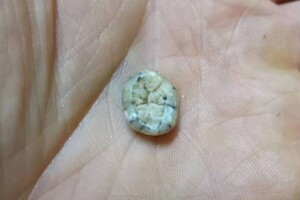This is the first evidence that these ancient people lived in Southeast Asia.

Scientists have discovered a tooth that is believed to belongs to a mysterious Denisov man, in an unusual part of the world – in Laos. This is the first evidence that these ancient people lived in Southeast Asia, at a distance of 2850 kilometers from the famous Denis Cave, where their remains were first found, according to IFLScience.
In an article published in the journal Nature Communications, an international team of scientists describes the discovery of a root tooth in the recently discovered cave Tam Ngu Hao 2 in the Annamit Mountains in Laos.
Read also: According to Mike Morley of Flinders University, scientists have found “hot tracks” that confirm that Denisov once lived in this part of the world. Researchers have searched for traces of Homo Erectus and early modern Homo Sapiens, the remains of which have been found here before. But it turned out that they were dealing with the remains of Denisov.
A more detailed analysis showed that the tooth belonged to a girl who died at the age of 3.5-8.5 years. Using several dating methods, scientists have found that the age of the tooth is 164-131 thousand years.
The genetic composition of the modern human population suggests that at this time Denisovs lived in Southeast Asia, but physical remains of this have not yet been discovered.
Denisovites and modern people have a common ancestor who lived on Earth about 500-700 thousand years ago. The “non-human” branch was divided about 470-380 thousand years ago into Denisovans and Neanderthals. About 200,000 years ago, there were five species of humans in the world: H. erectus, H. floresiensis, H. luzonensis, H. sapiens, and Denisovans.
sheds light on the existence of these mysterious ancient people. Most importantly, it shows that the area of residence of Denisovites in Eurasia was much wider than previously thought. It also shows that they have been able to adapt to a variety of environmental conditions.
Earlier, scientists from Germany and Italy concluded that climate change has pushed Neanderthals to start making more sophisticated tools . According to researchers, this is indicated by findings found in a cave in Lower Bavaria.




